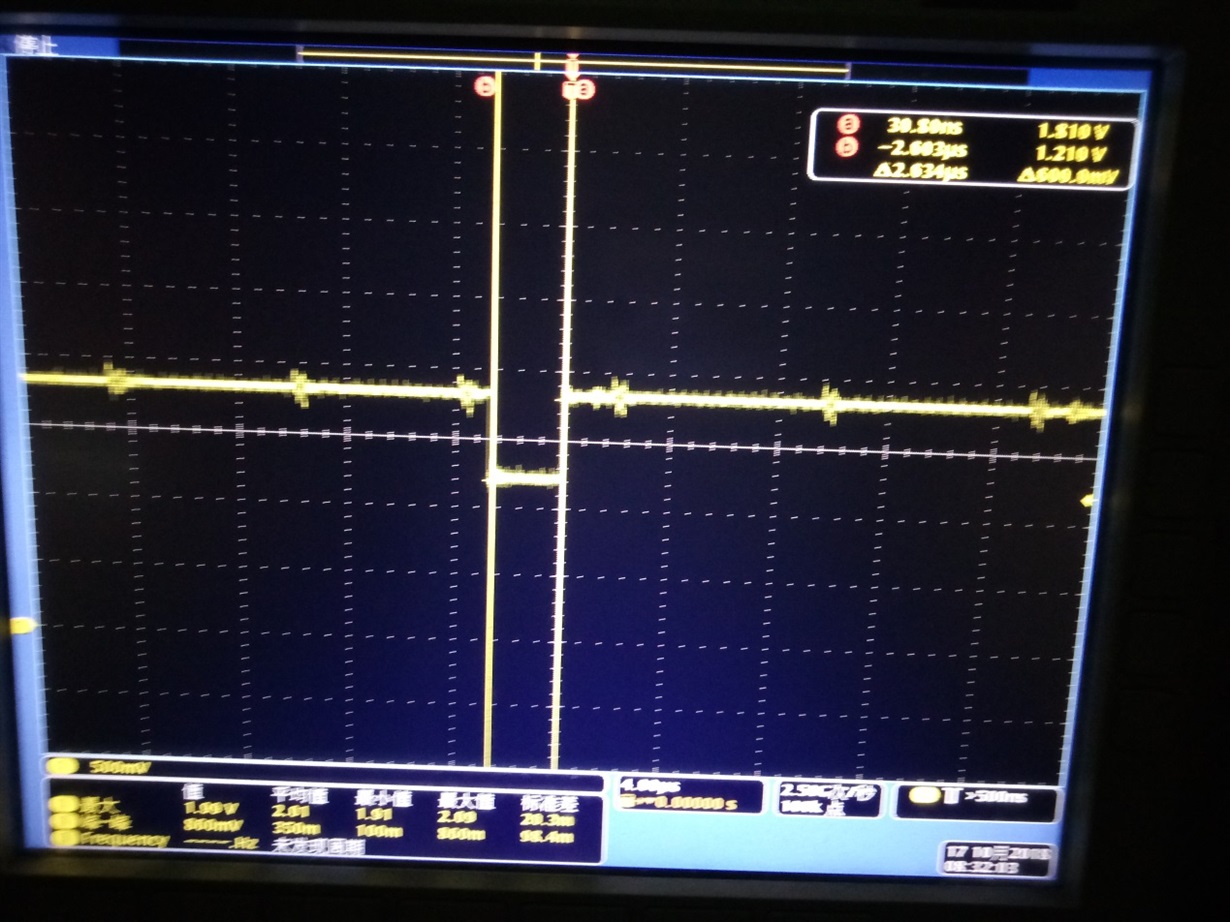Dears
We find the PMIC (TPS6590377ZWSR) "POWER GOOD" signal pull low to 0.2V(the low pulse width about 2.6us) when testing in -40° temperature on our AM5728 board. It is developed base on AM572X Industrial Development Kit. So, we tested the "POWER GOOD" signal on the IDK board(The "POWER GOOD" signal had no connect on IDK board, In order to keep the same as our board, we add a 10K pull high resistor to VRTC_OUT), also the "POWER GOOD" signal would be pulled low to 1.25V(the low pulse width about 2.6us) when testing in -40° temperature on IDK board. Now we are checking the SMPS output of the PMIC if there is anyone abnormal? At the same time can you give us some suggestion?






